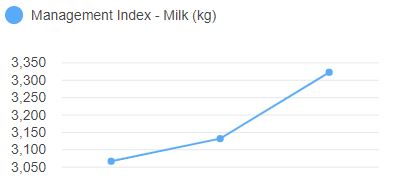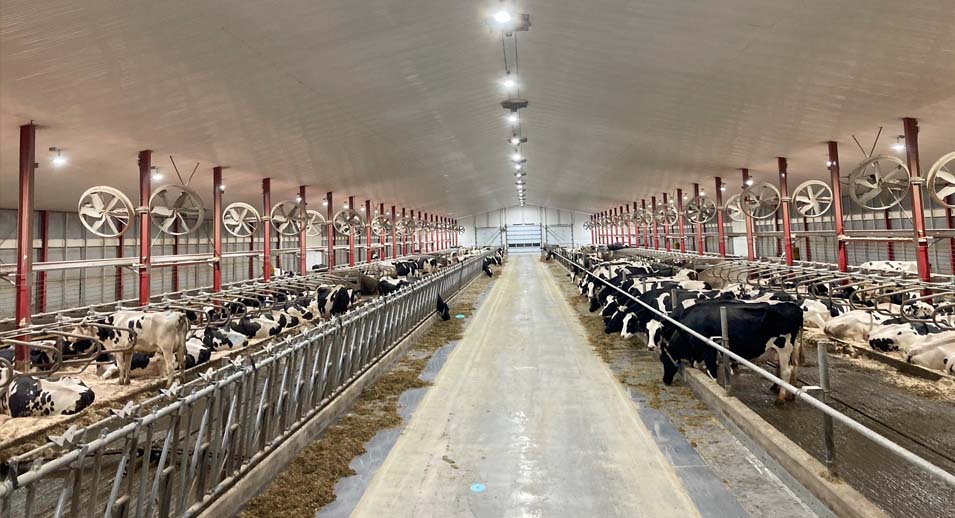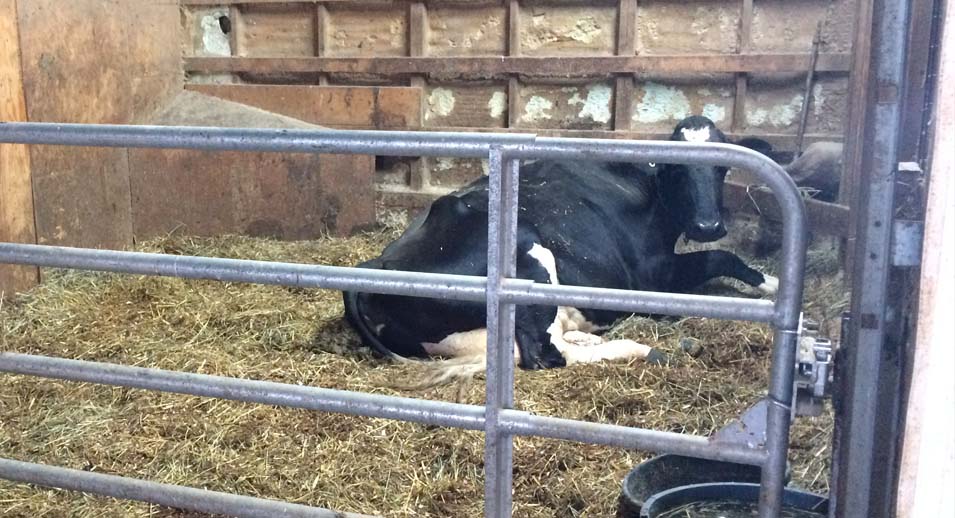What is the Management Index?
- June 13, 2022

To address this, Lactanet has developed an index called the Management Index. This index is one of the 10 criteria included in the new Sustainability Index report. It is designed to evaluate how comfort and management influence the expression of milk production genetics in the herd. What is the management index and how can it be useful? That is what we will discuss in this article.
A Science-Based Index
The management index is based on a basic equation in animal science:
Phenotype = Environment + Genotype.
This equation means that the performance of an animal (its phenotype) is the sum of its environment (feed, management, and cow comfort) and its genetic background (genotype and pedigree). To know the influence of the environment on an animal, it is enough to convert the equation to the following expression:
Environment = Phenotype – Genetics.
It is this last equation that is used to calculate the Management Index.
Management Index = Milk (kg) (phenotype) – EBV – Milk (kg) (genotype)
Milk (kg): This is the 305-day milk production of active cows in the herd corrected for fat and protein;
EBV – Milk (kg): The Estimated Breeding Values in milk are adjusted according to the EBV indices for fat and protein.
The Management Index is calculated three times a year after each Canadian genetic evaluation release in April, August and December. To be included in the index calculation, cows must be active on milk recording and registered in herd books.
More accurate comparisons between herds
But how can the index adequately compare herds with varying average ages while also taking breed into account?
To accomplish this, Lactanet calculates the average Management Indeces for each breed (HO, JE, AY, BS) and for each parity group (1, 2, 3+). Then, for each cow, the average of the indexes for her breed and parity group is subtracted. Mature cows generally have lower genetic indexes and higher production. Therefore, herds with a high proportion of cows in 3rd lactation and above would have an advantage in the Management Index if this factor was not considered.
The average values obtained by this calculation are close to 0, but can vary according to the breeds and the dates of the calculation.
How to Interpret the Management Index on the Sustainability Index Report?
On the Sustainability Index report, a ranking generated on a percentile scale that includes all Canadian herds on milk recording facilitates the interpretation of the Management Index. Table 1 shows the minimum values required for a herd to achieve a percentile rank of 50 when last calculated in April 2022. In other words, a percentile rank of 50 means that a herd is around the national average.
Table 1. Minimum value required in the Management Index (kg of milk) to reach a percentile rank of 50 by breed, April 2022
Race | Percentile Rank 50 |
Holstein | -239 |
Jersey | +18 |
Ayrshire | -56 |
Brown Swiss | -49 |
Did you know that over $90,000 in profit margins separate producers in the bottom 10% of the Sustainability Index and the top 10%? It pays to work on your sustainability!
A useful diagram
The Sustainability Index report provides another perspective of analysis with the historical data of the Management Index. The latest reports released in spring 2022 show the graphical evolution of the last four calculations. A rising Index as below (Figure 1) suggests that the 305-day production of the herd is progressing better than its genetic potential.
Figure 1.

Figure 2.

On the other hand, Figure 2 shows an unfavorable evolution of the Management Index, which suggests some decrease in management and comfort (e.g., thermal stress, feet and leg problems, uncomfortable sleeping surface, inadequate ventilation, etc.).












